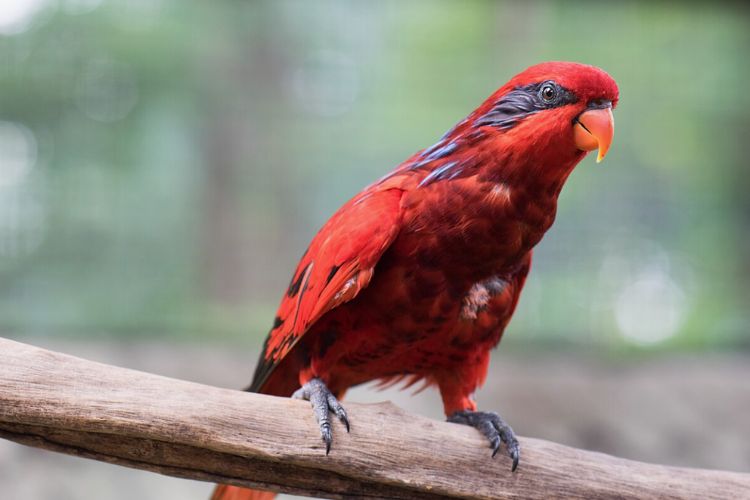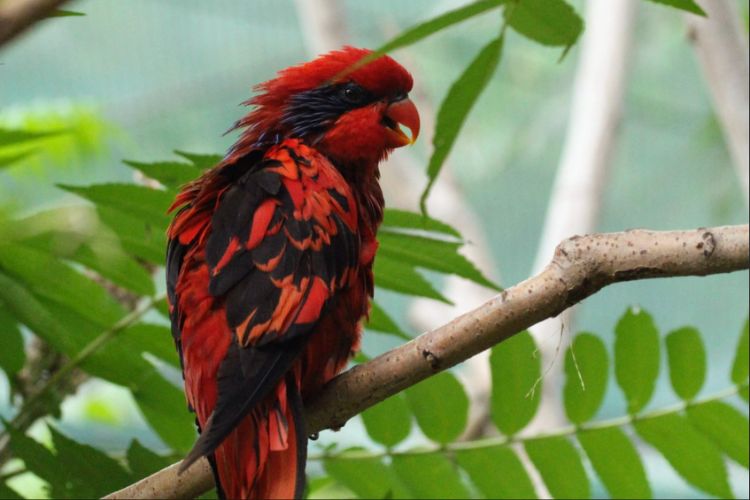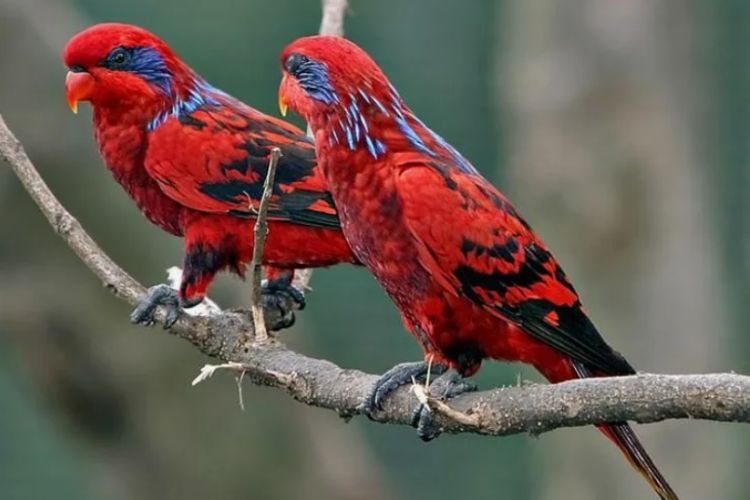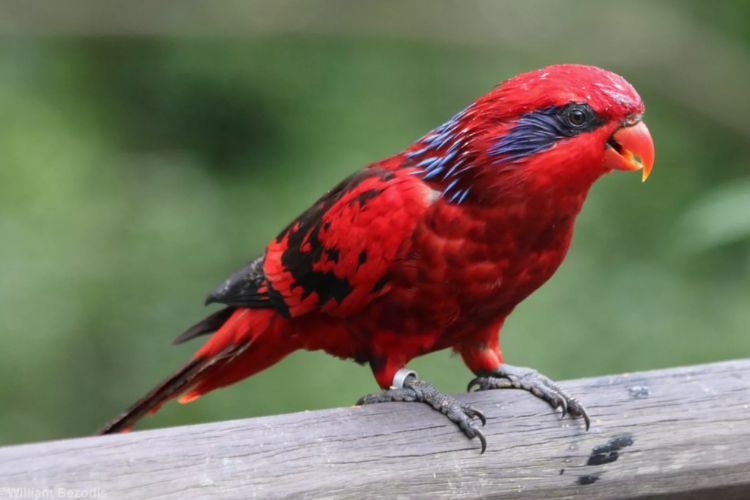The Blue-streaked Lory (Eos reticulata) is a true gem among parrots, captivating bird lovers with its brilliant colors and lively demeanor. Native to the islands of Indonesia, specifically the Tanimbar and Babar islands, this stunning parrot flourishes in the tropical forests, mangroves, and coastal regions of its home. With its striking beauty and playful nature, the Blue-streaked Lory is a bird that never fails to leave a lasting impression.

What immediately sets the Blue-streaked Lory apart is its dazzling plumage. The majority of its body is a vivid, deep red, contrasting boldly with the electric blue streaks that decorate its wings and upper back. These streaks appear almost like brushstrokes on a canvas, giving the bird an artistic and eye-catching appearance. The blue accents continue around its face, forming a mesmerizing pattern that frames its beak and eyes. Its curved beak, ideal for cracking open fruits and foraging for food, adds to the bird’s distinctive look.

In terms of behavior, the Blue-streaked Lory is just as fascinating as its appearance. These birds are incredibly social, often seen in pairs or small flocks. They are highly active and vocal, filling the air with a medley of calls and squawks as they chatter among themselves or announce their presence. Their playful antics, from acrobatic flight maneuvers to hanging upside-down from branches, showcase their energetic personalities and make them a joy to observe in the wild.
Feeding habits of the Blue-streaked Lory are equally intriguing. Unlike many other birds, lories have a special adaptation: a brush-tipped tongue. This unique feature allows them to extract nectar and pollen from flowers, which form the main part of their diet. They also enjoy feasting on fruits and soft seeds, playing an essential role in pollination and seed dispersal. By helping to fertilize and spread various plant species, they contribute to the health and diversity of their ecosystem.

However, the Blue-streaked Lory faces threats from habitat loss and the illegal pet trade, putting pressure on wild populations. Conservation initiatives are crucial to ensure that this vibrant bird continues to thrive in its natural habitat. Protecting these beautiful lories means preserving the rich biodiversity of the Indonesian islands they inhabit.
